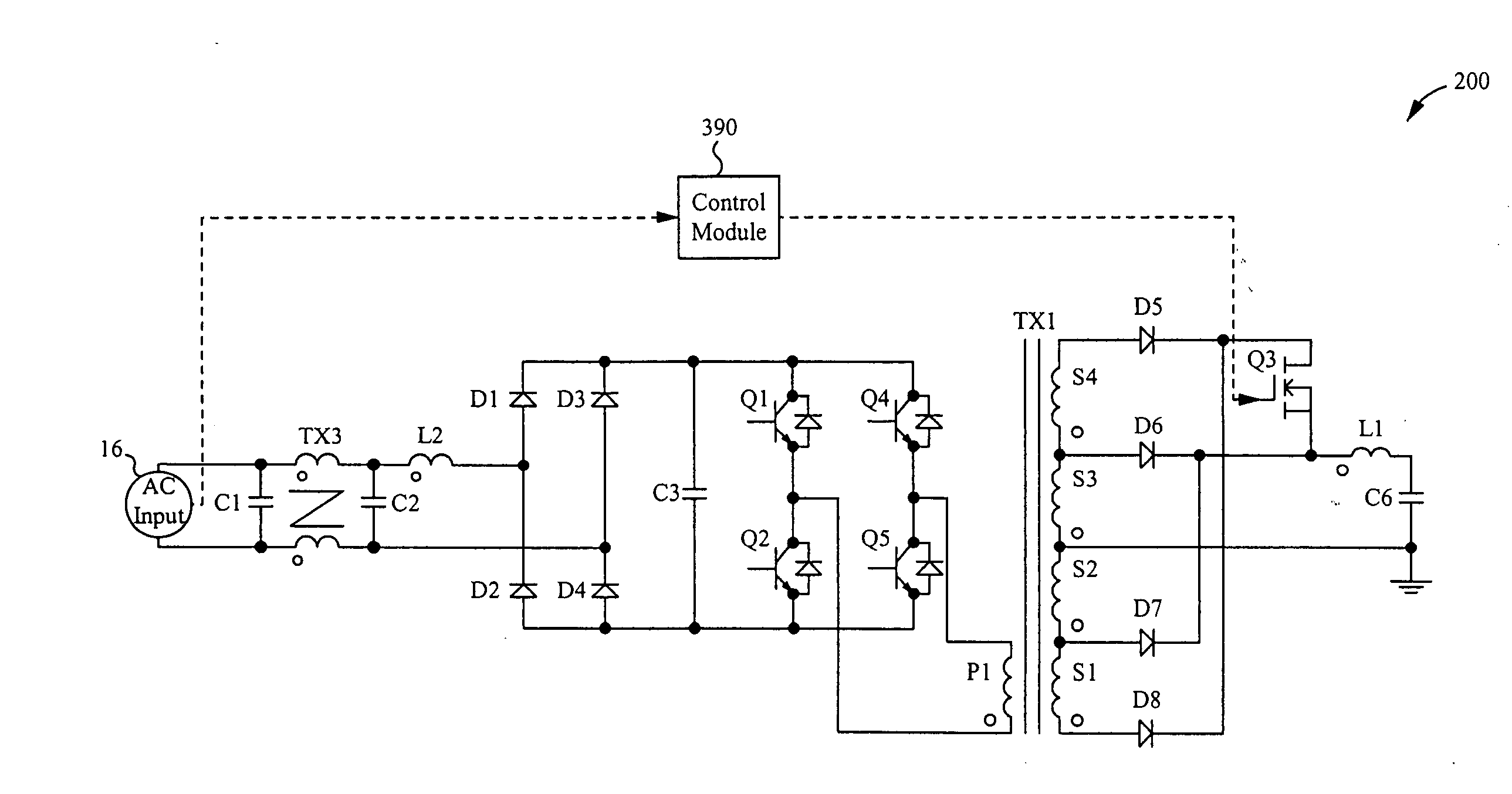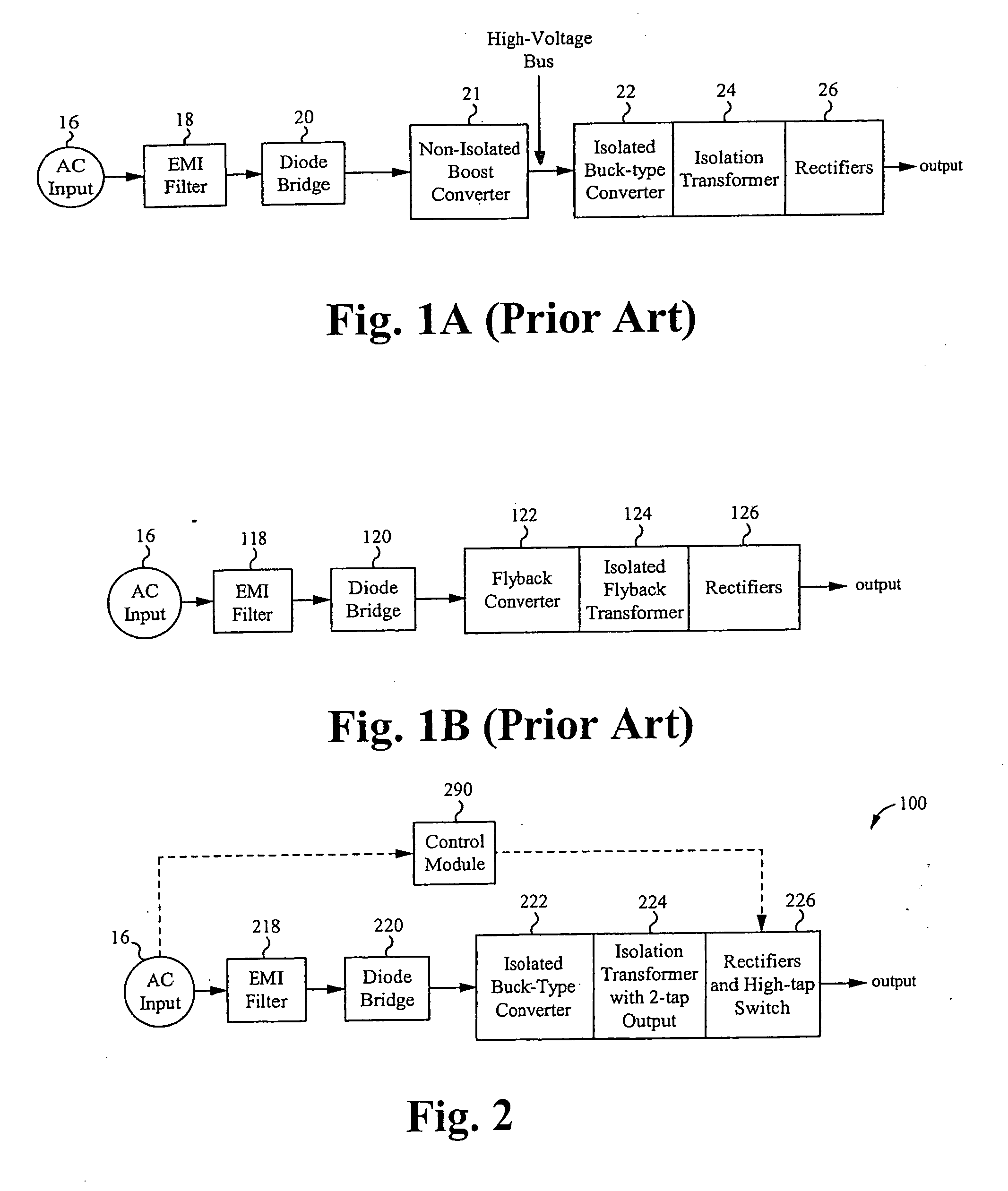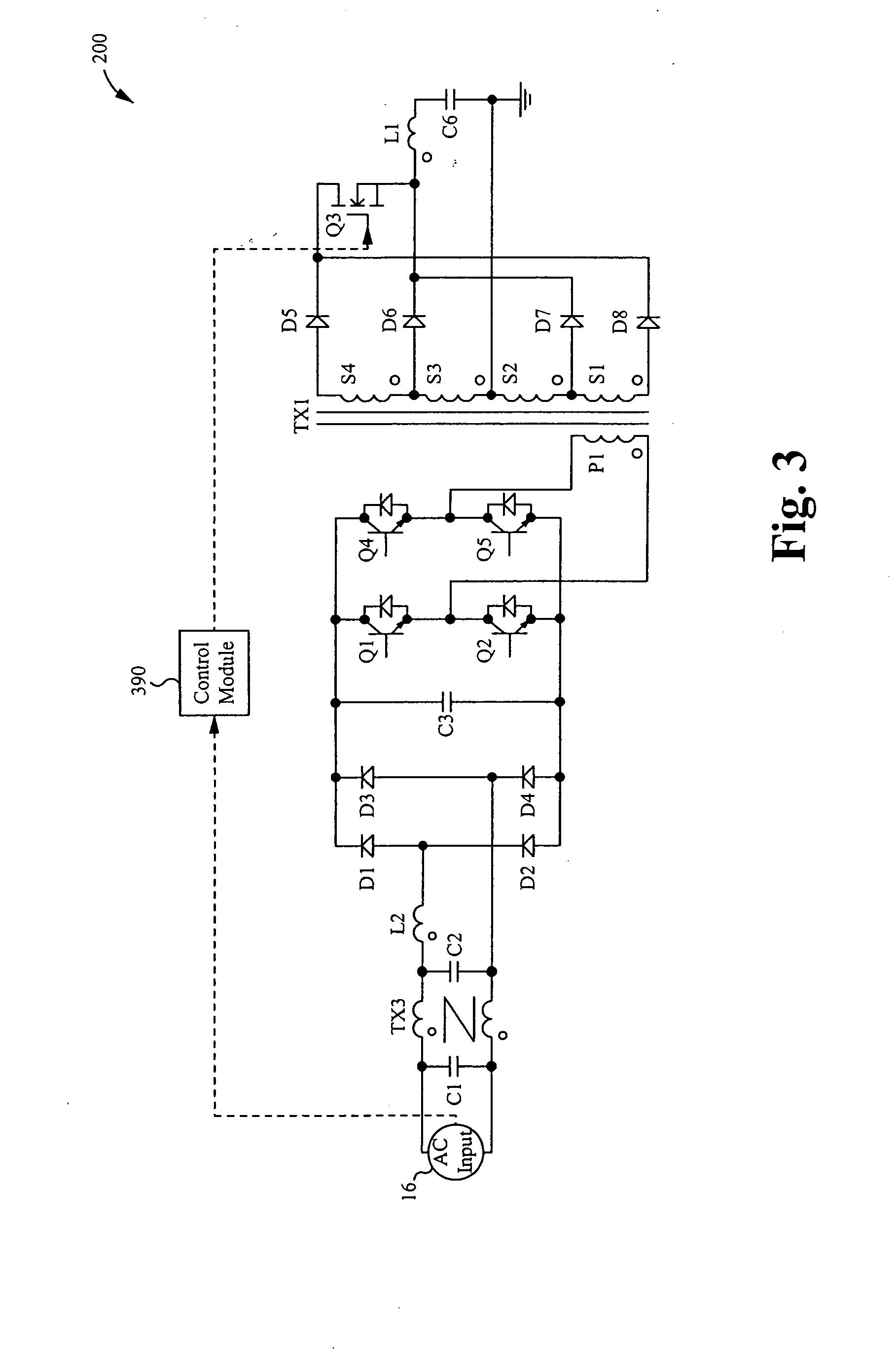High power factor isolated buck-type power factor correction converter
a technology of power factor and correction converter, which is applied in the direction of electric variable regulation, process and machine control, instruments, etc., can solve the problem of no reverse recovery, and achieve the effect of increasing efficiency, reducing turns ratio, and increasing power factor
- Summary
- Abstract
- Description
- Claims
- Application Information
AI Technical Summary
Benefits of technology
Problems solved by technology
Method used
Image
Examples
first embodiment
[0046]The power converter is configured to receive an AC input, to provide power factor correction, and to output an isolated DC voltage. In a first embodiment, the power converter includes an isolated buck-type converter with an isolation transformer. A rectifier, a tap switch, and a bulk storage capacitor are coupled to an output of the isolation transformer.
[0047]The isolated buck-type converter draws current from an AC input line when the input voltage scaled by the turns ratio of the isolation transformer exceeds the output voltage. When the rectified AC input line is at a low voltage part of the sinewave, the tap switch is turned on, thus increasing the effective turns-ratio from input to output of the transformer. The isolated buck-type converter is thus able to draw current during the low voltage part of the sinewave. When the rectified AC input line is at the high voltage part of the sinewave, the tap switch is turned off, thus instantly decreasing the effective turns-ratio...
second embodiment
[0074]In a second embodiment, the power converter includes two isolated buck-type converters, each with an isolation transformer and a rectifier coupled to an output of the isolation transformer. Each rectifier is coupled to a common output filter that includes a bulk storage capacitor. The voltage across the bulk storage capacitor provides an isolated DC output voltage of the power converter.
[0075]The two isolated buck-type converters have inputs tied in series across the full-wave rectified sinewave input. Rectifiers at the output of each isolated converter are connected to a common output capacitor. The series operation of the isolated converters is self-regulating because if the input voltage of one of the series converters drops, the output voltage of that converter drops, causing that converter to draw less power and thereby increase its input voltage. During the high-voltage part of the input AC sinewave, both of the series converters operate. During the low-voltage part of t...
PUM
 Login to View More
Login to View More Abstract
Description
Claims
Application Information
 Login to View More
Login to View More - R&D
- Intellectual Property
- Life Sciences
- Materials
- Tech Scout
- Unparalleled Data Quality
- Higher Quality Content
- 60% Fewer Hallucinations
Browse by: Latest US Patents, China's latest patents, Technical Efficacy Thesaurus, Application Domain, Technology Topic, Popular Technical Reports.
© 2025 PatSnap. All rights reserved.Legal|Privacy policy|Modern Slavery Act Transparency Statement|Sitemap|About US| Contact US: help@patsnap.com



